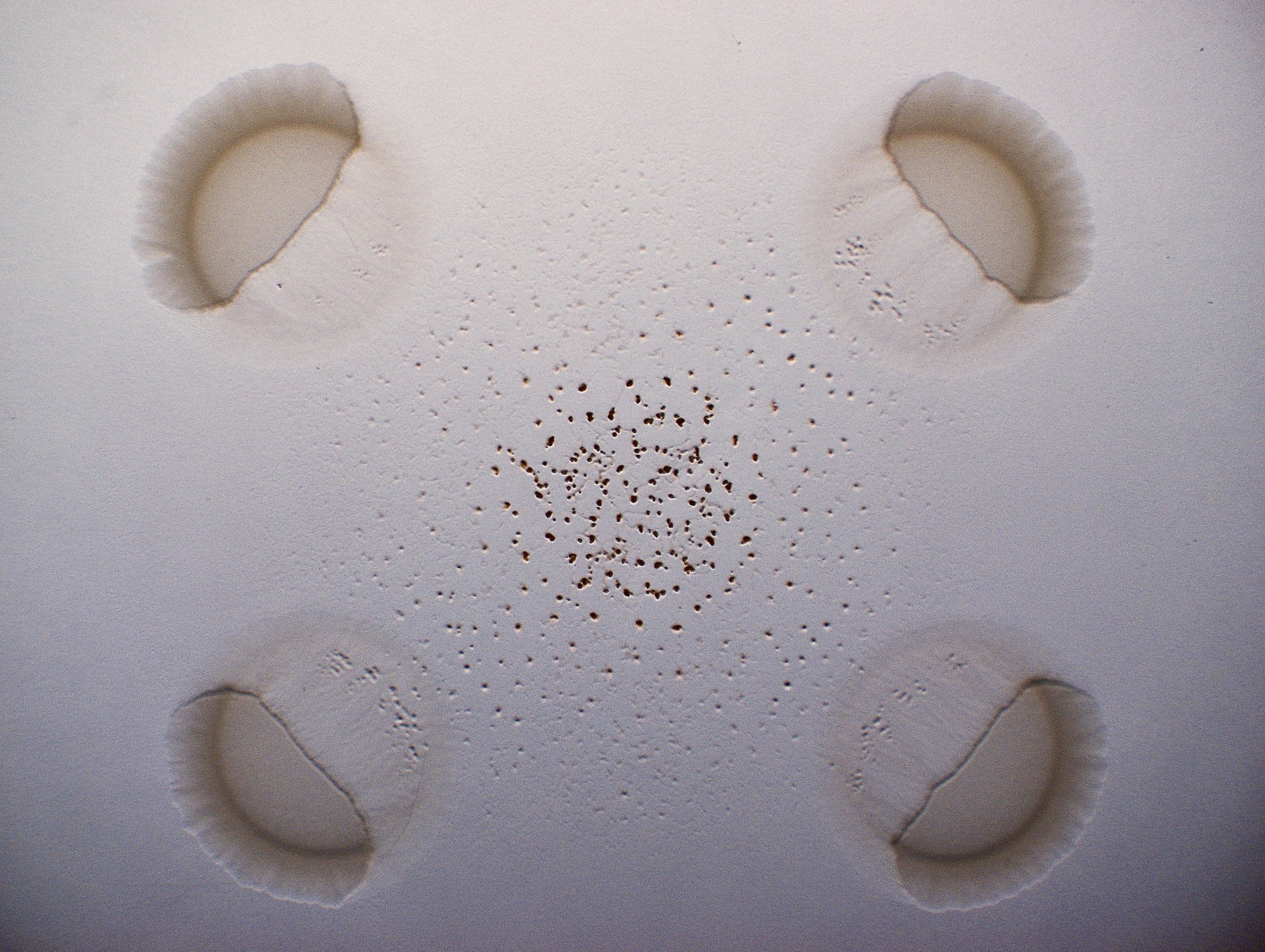
Background
Potential food near foraging predators varies in quality and quantity. Optimal foraging theory (OFT) seeks to model foraging behaviors that would optimize resource acquisition in environments with specified resource distributions. OFT can contribute to predicting how predatory traits will evolve across environments differing in prey distributions.
MyxoEE-4 was designed to test whether manipulation of prey density would cause bacterial predators to adapt relatively more at “searching” for prey - motility - when prey items are far apart vs more at “handling” prey - killing and consuming - when prey are closer together.
Design summary: Sixteen populations of the bacterial predator M. xanthus were placed at the center of agar plates on which patches of the prey organism Escherichia coli were distributed at either low or high patch density. Over 24 cycles, the predator was allowed to swarm outward for two weeks before it was transferred to new plates with fresh prey patches.
Highlights
Testing foraging theory over evolutionary time scales - Foraging theory can be tested by directly observing the evolution of traits associated with “searching” and “handling” in a motile bacterium.
Searching evolves more when prey are scarce - Improvements in a predator’s ability to reach prey are greater after evolving when prey are rare compared to when prey are common.
Potential trade-off between predatory vs developmental fitness - The evolution of greater foraging proficiency was associated with declines in developmental performance.
Publication
Hillesland, K. L., G. J. Velicer and R. E. Lenski. 2009. Experimental evolution of a microbial predator’s ability to find prey. Proceedings of the Royal Society B. READ IT HERE